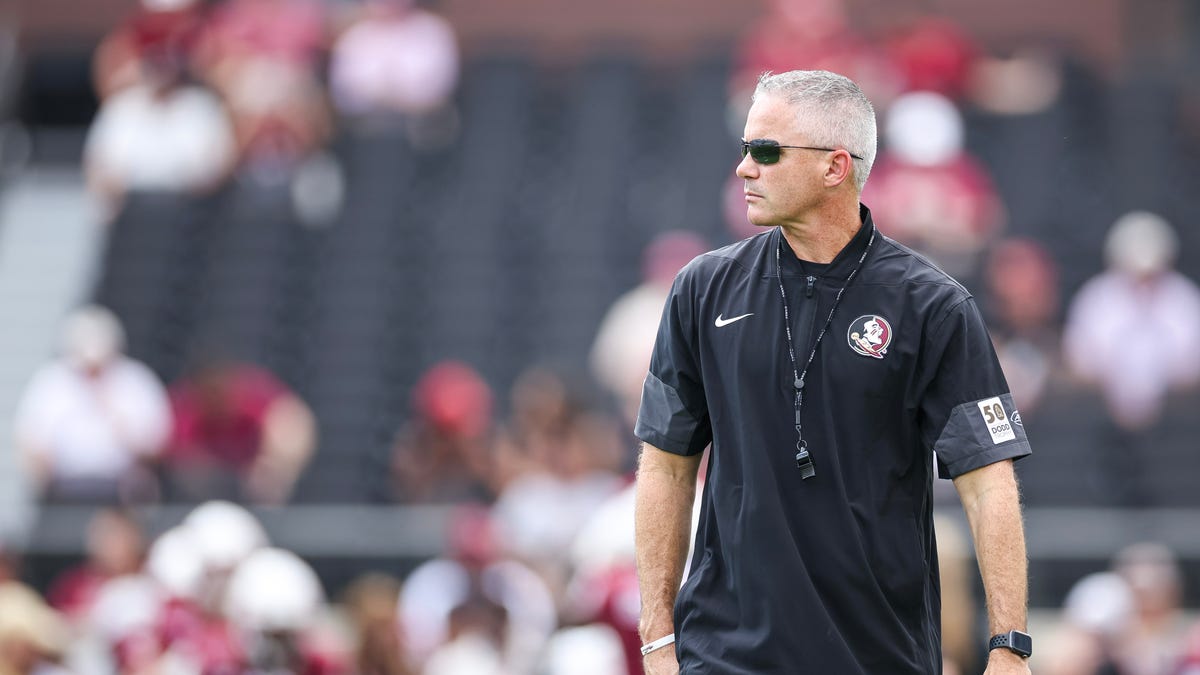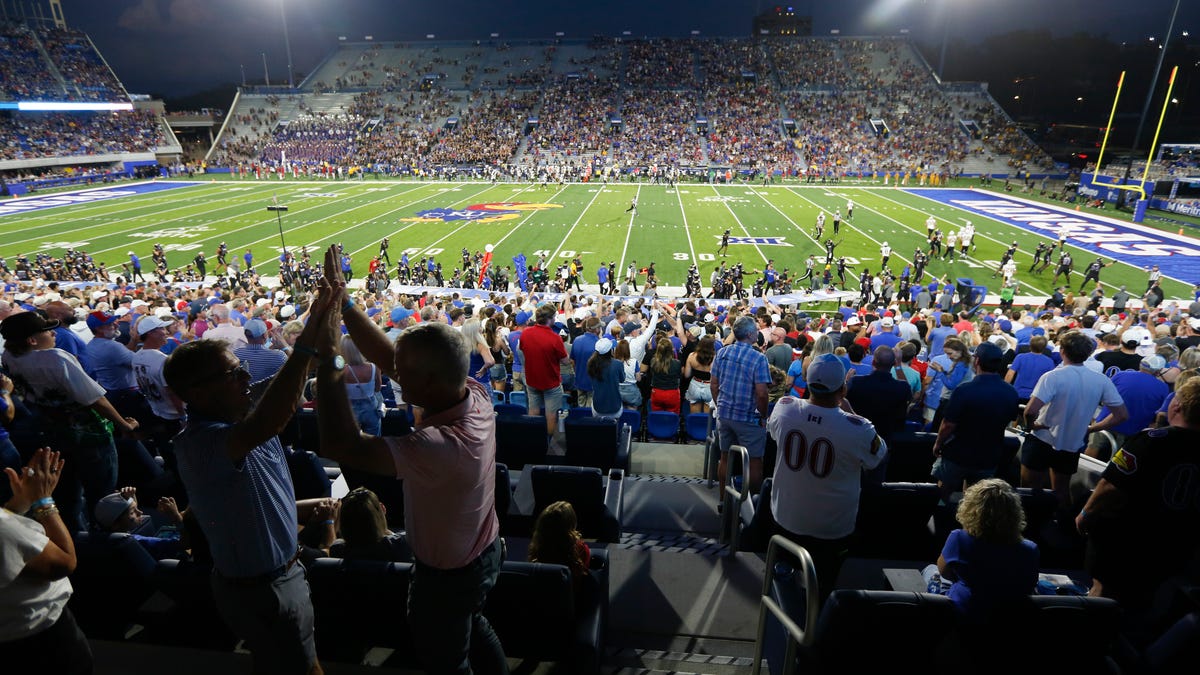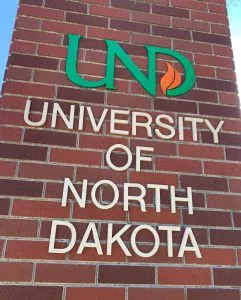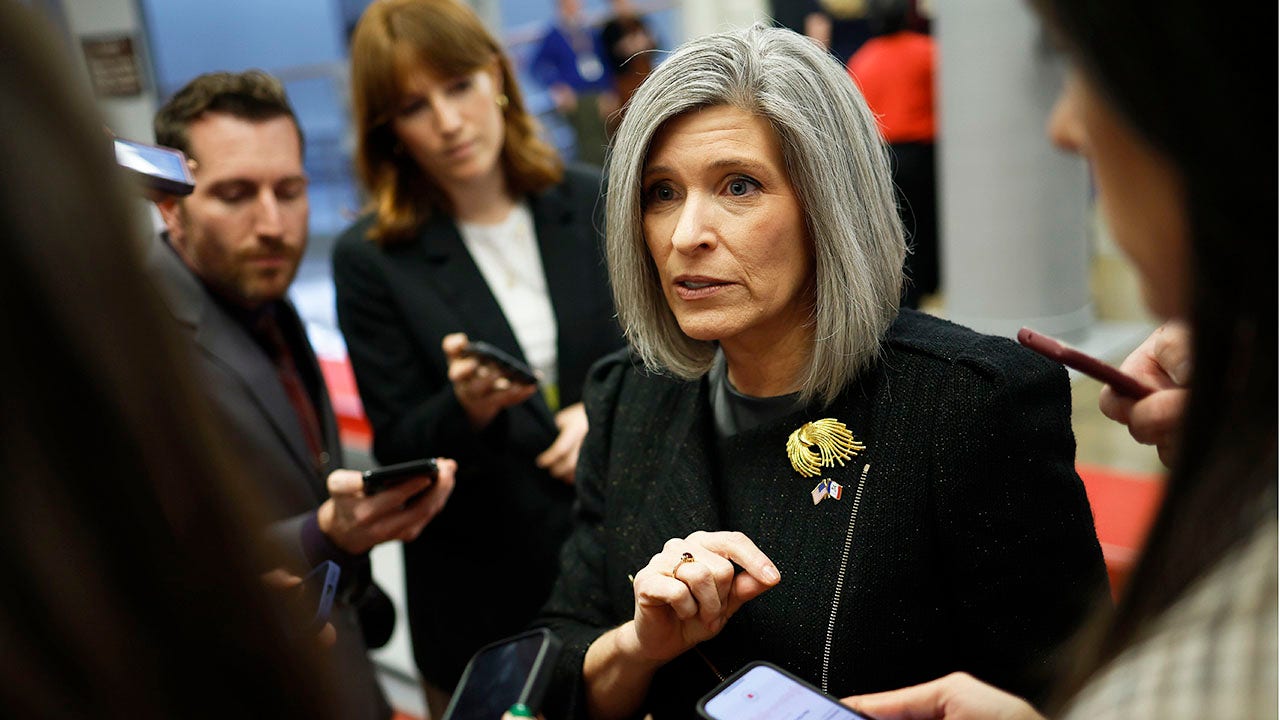Oregon
Former Oregon QB Marcus Mariota joins the Commanders ready to play or mentor younger player
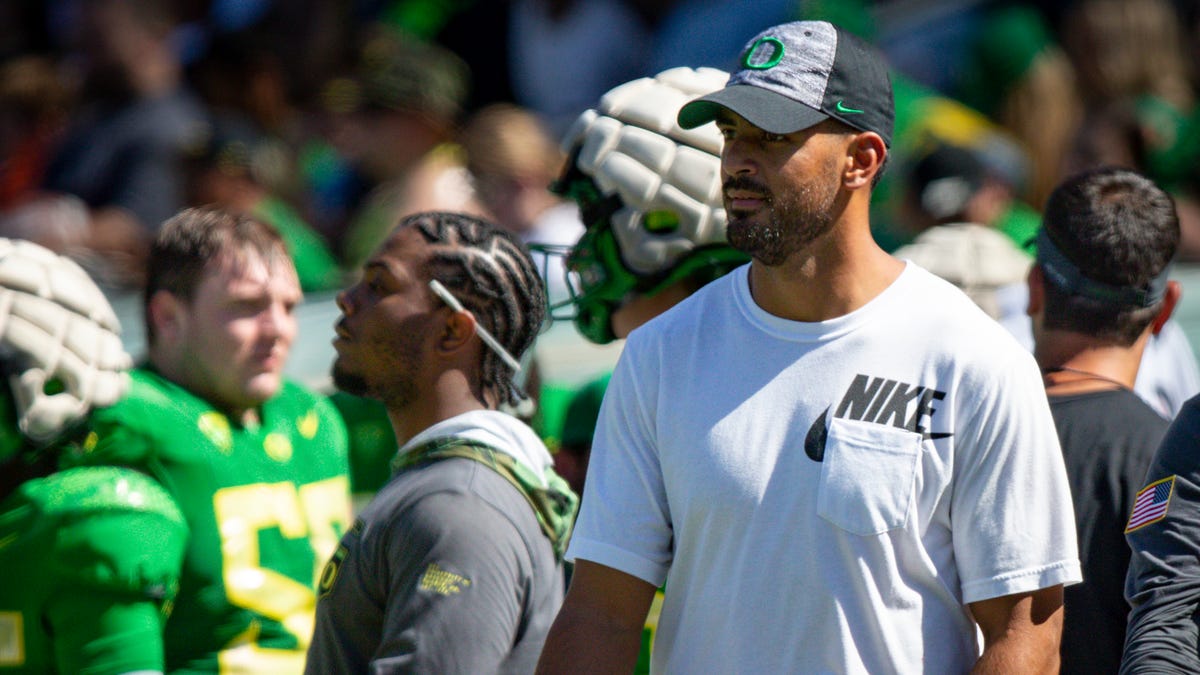
Marcus Mariota’s hair is grayer now than when he entered the NFL as a highly touted prospect and a potential face of a franchise.
He believes everything he has gone through since has set him up to be ready for anything in his next opportunity with the Washington Commanders.
After signing a one-year contract Thursday, Mariota said he’s prepared to play if called upon while also serving as a mentor to the young quarterback who could be coming with the second pick in the draft.
“Whatever this staff, whatever this team needs of me, I’m going to do it to the best of my abilities,” Mariota said on a video call with reporters.
“I’ve dealt with a lot of different things throughout my career. I’ve been a starter, won a playoff game. I’ve also been cut, I’ve also been injured, I’ve also been benched. So, I think all those experiences create value and also creates opportunities for me to build relationships with guys.”
One of those guys could be a rookie at football’s most important position. Washington is in place to select LSU’s Heisman Trophy winner, Jayden Daniels, or North Carolina’s Drake Maye if Chicago selects USC’s Caleb Williams first, as expected.
It doesn’t hurt that Mariota was the No. 2 pick in the 2015 draft out of Oregon to the Tennessee Titans. Now 30 and with 90 games and 74 pro starts under his belt, he remembers what that was like and could be the perfect person to provide some perspective.
“That expectation for you to be the quote-unquote ‘savior’ and all that is a lot,” Mariota said. “If that’s the way we go, I can provide a little bit of comfort knowing that: Just be your best version of yourself, don’t worry about everything else, don’t worry about the expectations, just go out there and try to get better every single day and the rest of it will fall into place.”
Hours after Mariota signed his contract, with a base salary of $6 million that could be worth up to $10 million, the Commanders traded 2023 starter Sam Howell to Seattle in a swap of draft picks. It’s the latest in new general manager Adam Peters’ flurry of moves to turn over the roster that may have only a dozen or so returnees next season.
New linebacker Frankie Luvu, one of many free agent signings, said he’s blessed to now be teammates with Mariota after playing against him for several years.
“Just excited to be on the same side as him,” Luvu said. “I’ve seen him grow a lot. … Just the amount he’s grown and the leadership he’s taken — guys listen to him when he steps in the room and taking control when time is on the clock.”
Mariota said he was willing to “wait and see” about possibly being the starter, which could easily be a placeholder job from Week 1 until a young QB is ready. On his fifth stop after Tennessee, Las Vegas, Atlanta and most recently Philadelphia as Jalen Hurts’ backup, he sounds at peace with whatever his role may be.
“For all of us that are in kind of this position, you always want to be a starter,” Mariota said. “You always want to be a guy that’s leading a franchise out there. That’s why you play. That’s why you do it. But I’ll never let my own ego get in the way of what’s most important for the team.”
NOTES: The Commanders resigned defensive end Efe Obada, making him the third player back from the previous regime along with safety and 2022 All-Pro special teams player Jeremy Reaves and punt returner Jamison Crowder. … The team also added free agent linebacker Anthony Pittman.

Oregon
David Pollack reveals pick, score prediction for Oregon-Penn State showdown

Ahead of a massive Week 5 showdown between two of the Big Ten’s primary contenders, Oregon visiting Penn State, college football analyst David Pollack broke down the game and explained which side he’s giving the edge to on Saturday evening.
An episode of Pollack’s podcast, See Ball Get Ball, dropped on Wednesday and featured the former All-American’s picks for the top games of the week, which he paired with some in-depth commentary behind why he’s selected the teams and final scores that he has. For the big one, Oregon at Penn State, he explained why the Nittany Lions could have a few aces hiding up their sleeve.
“Penn State ain’t hasn’t had show nothing yet, and they haven’t showed nothing yet,” Pollack said of PSU’s soft open to their 2025 schedule. “Listen, (Andy) Kotelnecki, with a preseason tune-up, he knows exactly who he is, he knows what he is, like, they’re going to score some points,” he added.
Penn State ran off wins against Nevada, FIU and Villanova before taking their bye week ahead of Oregon. En route to outscoring those poor souls by a 132-17 total score, Pollack’s right, Penn State didn’t have to dive deep into their bag. He referenced Georgia’s performance vs. Tennessee from a couple weeks ago, noting that the Nittany Lions have an established ground game to pair with whatever new tricks are introduced in the passing game.
“The run game beat up Oregon a year ago,” Pollack commented. “The run game can be exactly the same as it was, if not better. The receiving corps cannot be worse, and I just think, with all of that, I’m betting on Penn State and I’m betting on who they have, their experience.”
The heads of that strong ground game are senior running backs Nick Singleton and Kaytron Allen, contributors since the day they stepped on campus, while quarterback Drew Allar is a veteran returning starter with NFL aspirations. That’s a lot of experience for PSU, whereas Oregon has a younger transfer leading the charge in former UCLA QB Dante Moore.
“I think Jim Knowles will have something for Dante Moore that he’s absolutely never seen before in an atmosphere that’s going to be absolutely ballistic,” Pollack emphasized. “I think Dante Moore is going to look more human than he’s looked, and because of that, they could struggle a little bit. They’re not going to get to 45 like they did a year ago in the Big Ten championship game.”
With the experience edge and having the Ducks migrate across all three time zones to touch down in a “ballistic” Beaver Stadium, Pollack sees too much evidence going in Penn State’s direction for the victory.
“I got the Nittany Lions, man,” he stated. “I got 30-24 Penn State, they take care of business. All of the guys on the front who can make plays, they can get to the quarterback, they can get TFLs. They can rattle Dante Moore and I think they take care of business.”
Oregon
Why Dante Moore plans to reach out to Bo Nix before Oregon’s trip to Penn State

EUGENE — Oregon’s current starting quarterback could reach out to one of his predecessors ahead of the biggest road game of his career.
Dante Moore visited Penn State as a recruit on Sept. 18, 2021, when the Nittany Lions hosted Auburn and then-Tigers quarterback Bo Nix for a White Out game at Beaver Stadium.
“At the time I didn’t know much of Bo as a person and of course as a player,” Moore said. “He was there throwing a lot of great passes … he was a competitor. The stadium was really loud of course.”
Nix was 21 of 37 for 185 yards and had six carries for 29 yards in a 28-20 loss to Penn State, which has extended its win streak in White Out game to six entering Saturday’s game with No. 6 Oregon.
“It was one of those that once you play in you know why everybody talks about it and speaks so highly of it,” Nix said in an interview with The Next Round days following that game. “It was fun. It was loud and it was exactly what an away game should feel like.”
Moore was reminded of the experience of visiting Happy Valley and seeing his high school teammate, former Penn State safety Jaylen Reed, play against Nix four years ago. He plans to talk to Nix this week about what it was like to play in what is widely considered the toughest road environment in the Big Ten and one of the toughest in college football.
“The stadium was really loud,” Moore said. “Understanding how Bo, how composed he was. Of course, I hope I have the chance to talk to him and hear his thoughts. It’s going to be a great week; it’s going to be a great game. It’s going to be a hostile environment. But I’m going to reach out to Bo for sure to see what things he has to tell me.”
Moore is completing 74.7% of his passes this season for 962 yards with 11 touchdowns and one interception and added 87 yards rushing. But Penn State is the best opposing defense he will have ever faced and a crowd of over 100,000 makes it even more challenging.
Penn State coach James Franklin said Oregon’s offense is operating similarly with Moore as it did last season with Dillon Gabriel, who led the Ducks past the Nittany Lions in the Big Ten Championship game.
“He’s a throw-first guy,” Franklin said. “Is very accurate. Can extend plays. Obviously, has a ton of play playmakers around him. … I think Dante sitting behind Gabriel was really valuable for his development.”
No. 6 Oregon (4-0, 1-0 Big Ten) at No. 3 Penn State (3-0)
- When: Saturday, Sept. 27
- Time: 4:30 p.m. PT
- Where: Beaver Stadium, University Park, PA
- TV channel: NBC/Peacock
- Watch: You can watch this game live for free with Fubo (free trial), with DirecTV (free trial) or streaming live on demand with Peacock.
- Stream: DirecTV (free trial) or Fubo (promotional offers) or Peacock ($10.99/month) or Sling (college football season pass is just $199). Streaming broadcasts for this game will be available on these streaming services locally in Oregon and Washington, but may not be available outside of the Pacific Northwest, depending on your location.
If you purchase a product or register for an account through a link on our site, we may receive compensation. By using this site, you consent to our User Agreement and agree that your clicks, interactions, and personal information may be collected, recorded, and/or stored by us and social media and other third-party partners in accordance with our Privacy Policy.
Oregon
Ducks stay put in US LBM Coaches poll after 34-14 road win at Northwestern
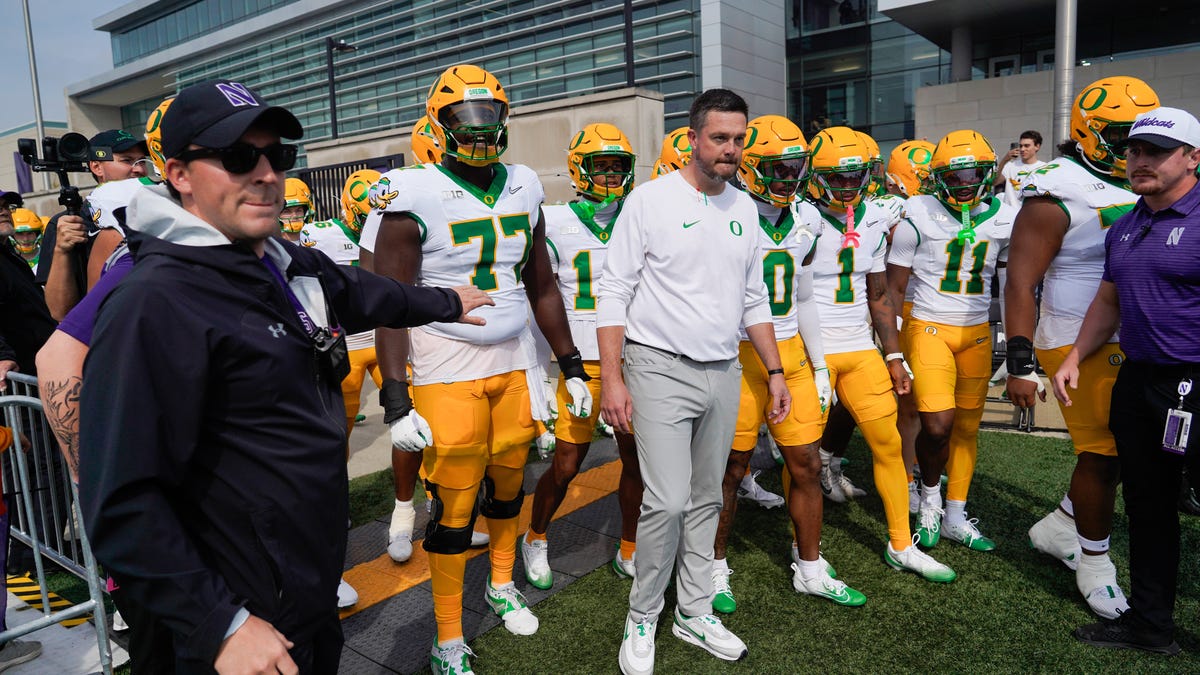
It was quite the uneventful week in college football, at least for the top teams in the US LBM Coaches poll, including the Oregon Ducks after their 34-14 road win at Northwestern.
The top seven teams in the poll didn’t go up or down from last week. Oregon is still No. 5 in the country as they now prepare for the annual rivalry game with Oregon State at Autzen Stadium. But everyone is pointing to the next game after the Beavers, however.
Oregon goes to Penn State, which is ranked No. 2 in the poll and will likely stay at No. 2 as the Nittany Lions have a bye this week. The Big Ten dominates the poll with Ohio State on top at No. 1 after its 37-9 win over Ohio. Illinois is also in the Top 10 as the Illini are No. 9 in this week’s version of the poll.
Indiana moved up two spots at No. 17 with its 73-0 win over Indiana State.
The biggest move came from Georgia Tech after the Yellow Jackets stunned Clemson 24-21 on a last-second field goal. As a result, the Tigers, previously ranked No. 11, dropped to 1-2 on the season and completely out of the poll.
Besides Georgia Tech, Missouri (No. 22), Vanderbilt (No. 23) and Auburn (No. 25) are newcomers to the poll.
Contact/Follow @Ducks_Wire on X (formerly Twitter) and like our page on Facebook to follow ongoing coverage of Oregon Ducks news, notes, and opinions.
-

 World1 week ago
World1 week agoTrump and Zelenskyy to meet as Poland pressures NATO on no fly zone over Ukraine
-

 Technology1 week ago
Technology1 week agoNew Evite phishing scam uses emotional event invitations to target victims
-

 Health1 week ago
Health1 week agoDiabetes risk quadruples with use of popular natural remedy, study finds
-

 Politics1 week ago
Politics1 week agoHouse plans Thursday vote on government funding bill to extend spending through November
-

 Business1 week ago
Business1 week agoDisney, Universal and Warner Bros. Discovery sue Chinese AI firm as Hollywood's copyright battles spread
-

 Health1 week ago
Health1 week agoWho Makes Vaccine Policy Decisions in RFK Jr.’s Health Department?
-

 Finance3 days ago
Finance3 days agoReimagining Finance: Derek Kudsee on Coda’s AI-Powered Future
-

 Lifestyle1 week ago
Lifestyle1 week agoBobbi Brown doesn’t listen to men in suits about makeup : Wild Card with Rachel Martin



